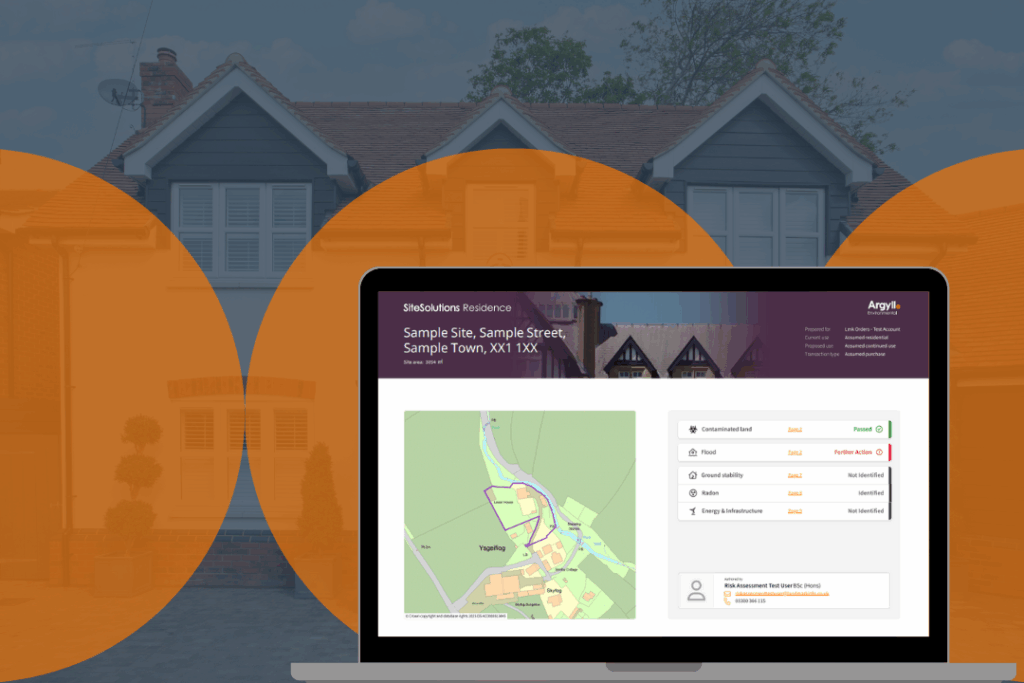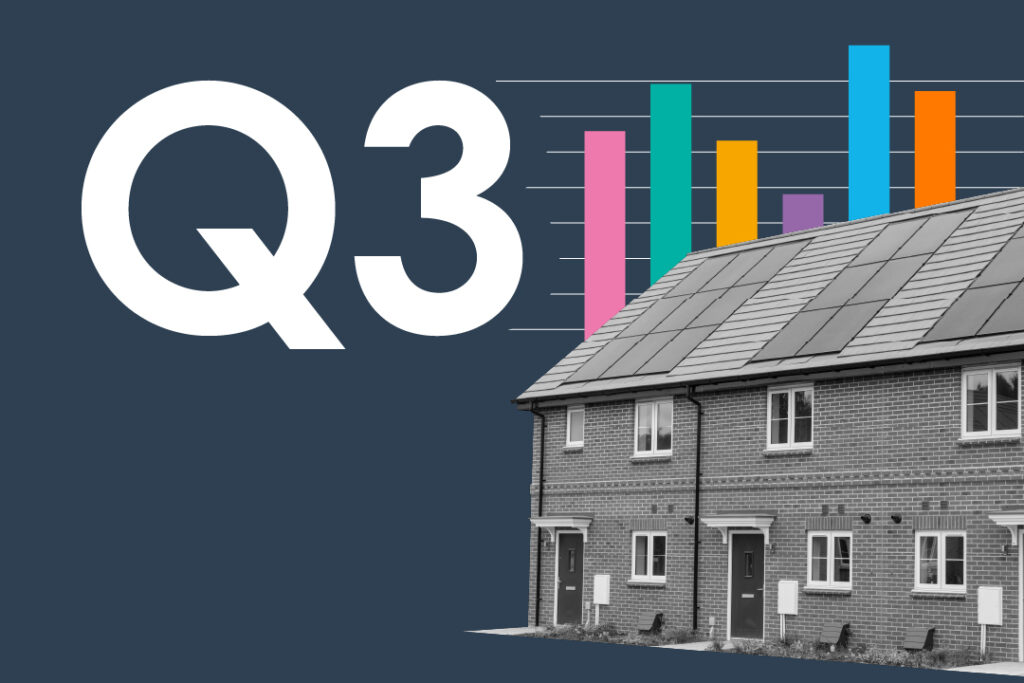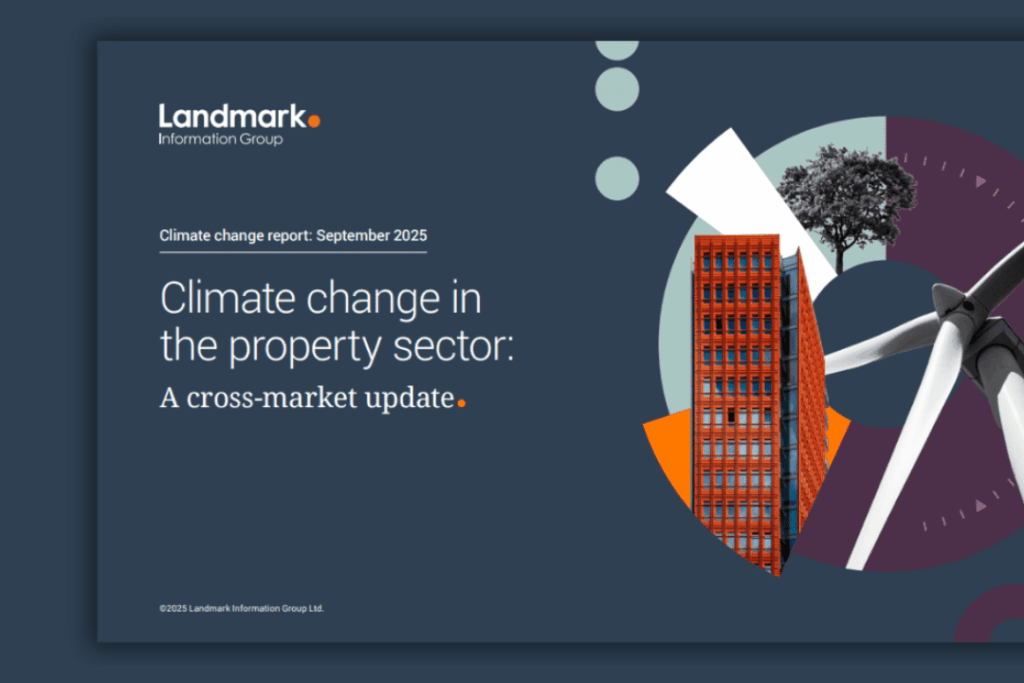
Welcome to week two of our Risk Series, where we examine the top five conveyancing risks in more detail.
Each week we will analyse a different risk, and will discuss further in the Q&A session of our upcoming webinar. Today our focus is on Flood Risk, written by Mark Taylor, Channel Manager at Landmark Information and environmental auditor with the Institute of Environmental Management and Assessment.
Flood Risk: Are we doing enough to protect ourselves and our assets?
A flood is the most effective and indiscriminate ‘burglar’ there is. It will take everything you have, including items of no value to anyone else.
I’ve not been the victim of a flood myself. My experience of flooding fortunately has been from an armchair. However, as we move to a more hostile and unpredictable climate, it’s impossible to ignore. You only need to look back to last year to see several records broken.
- Feb 2020: wettest February on record dating back to 1862, with 3 storms hitting the UK (Ciara, Dennis, Jorge). Previous record from 1990.
- May 2020: driest May on record (Carbon Brief Ltd, 2021).
- October 2020: 3rd October became the wettest day on record for the UK (Met Office, 2021).
Flooding is not a recent phenomenon. It’s a natural event that would have occurred since rivers graced the landscape. Unfortunately, it’s now something that is ingrained into life for some of us. Its impact on our society in areas of the UK are significant. The causation is simply what would be considered now as poorly planned development, in areas at risk without suitable, sustainable mitigation. Development took precedent over understanding risk and if appropriate, risk management.
It’s not just the location of the development which has been key in increasing flood risk. Settlements characterised by concrete and tarmac have broken the natural hydrological cycle, increasing run-off and preventing infiltration. Watercourse have been over engineered, straightened and diverted into shorter, man-made channels resulting in less volume, higher erosion and higher discharge rates.
The result of this is millions of people and businesses at risk in any given year
Our causation of this issue has left us in a place where flood risk can’t be unacceptable. That stance is now impossible, albeit it could be applied to planning and new developments if we wanted to take a very firm stance. This would be difficult especially with a necessary focus on brownfield development and urban regeneration. Flooding now has to be seen as a scale of risk. What is an acceptable frequency of risk for us to be exposed to?
In reality, this will vary person to person however regulators need to take a stance. Given over 5 million properties are at risk it’s impossible to be so black and white.
In some areas of the country, risk can be argued as being unavoidable. For example, in Boston Borough Council, over 90% of properties located in the borough are deemed to be within a Flood Zone 3 area. This is followed by properties in Kingston upon Hull City Council, South Holland District Council, London Borough of Hammersmith and Fulham, at c. 90%, 77% and 62% respectively.
It’s important to note that this data only shows the percentage of properties located in a Flood Zone 3 area. It does not comment on any additional precautions taken to mitigate such risks. However, on the counter side of this argument, it also only assesses risk from two mechanisms, fluvial and tidal and omits pluvial (surface water) and groundwater risk areas.
Given both the impact and cost of flooding, are we:
- Taking it seriously enough during the homebuying process?
- Doing enough to protect ourselves from risk where it exists?
Are we taking risk seriously enough?
The scale of risk across the UK is quite a well understood entity. We know that over 5 million properties are at risk of flooding. Less known is that because of the impacts of climate change, some suggest this could increase to 1 in 3 (RIBA, 2021).
Climate change is going to result in increased risk from both a storm ferocity and regularity standpoint and whilst climate change is expected to bring longer, dryer summers, it’s also predicted to result in longer, wetter winters.
Despite this, even considering the scale of risk now, the frequency of events and how they are reported in the media, at the point of buying a home or investment, there is a strong position to argue that the answer to the above question is “No”.
According to the Law Society’s website: Practice notes give you guidance on a range of important legal topics, helping you give your clients the best possible advice. They set out our view of good practice for our members.
The Law Society Practice Note on flood risk has been around since 2013. Despite this, is there still a barrier to understanding flood risk as part of pre-acquisition due diligence?
With less than 30% of residential transactions annually carrying out a proper flood assessment, it seems there might be.
Given the significance of flood risk and the impact it can have on property value, insurance terms and (often overlooked) mental well-being, surely if this was a valued risk the percentage would be a lot higher than 30%? If we look at the commercial market, flood risk is taken a lot more seriously with the percentage of transactions with a full flood assessment closer to 60%. Furthermore, the impact on climate change on flooding is already becoming a talking point amongst the investor community as environmental, social and corporate governance (ESG) and sustainability move up the agenda within the industry.
The price of conveyancing inevitably has an impact on the take up of flood reports, due to what is an ever-increasingly competitive market.
To account for this, flood reports that screen risks and are purely based on data dominate the residential market, whereas in the commercial space, combined environmental reports do. While these types of reports, like Landmark’s Envirosearch provide excellent insight into risk, when a risk is identified it’s important that flood risk is assessed and reported in more detail beyond that of basic and limited automation.
However, where I think we need to get to is the view that the small added cost at the beginning shouldn’t be a barrier. A flood report should be an enabler to the transaction especially as its cost will be negligible in comparison to any excess paid on a flood claim, and the disruption to someone’s life.
Are we doing enough to protect ourselves from risk where it exists?
Answering this question is tricky, especially from a legal due diligence standpoint as its remit is providing information on risk to in effect, inform someone else’s decision. Again, people’s appetite to risk will always be intrinsic and balanced against what they perceive the value to be and what is important to them.
One issue skewing this, though, is how risk is often portrayed. For speed and ease of interpretation, too much focus is on providing a simple answer rather than explaining risk. This can be highlighted by what we often assume low risk is. We assume low risk pretty much means no risk and when reported we don’t bother reading further. In fact, low risk maybe as a result of defences and without them, a high risk could exist. As we know all too well in the UK, defences aren’t perfect and low risk areas can and do still flood if they’re reliant on physical barriers holding flood water back.
However, focussing on the question at hand, given the UK’s position on flood risk and that it’s a property owner’s responsibility to protect their property from flooding, do we acknowledge and subsequently act on this?
Yes, the government plays an integral role in managing and reducing risk, the Department of Environment and Rural Affairs (Defra) having overall national responsibility for policy. But do we truly accept responsibility for this issue, and if not, why not?
Within this space I think more can be done by flood risk report providers. However, search providers do need to walk along the fine line, ensuring the needs of the industry are met (short, concise and clear), as well as discussing the key mechanisms for managing risk set out in the Law Society Practice Note, and insurance.
Insurance is vital in managing flood risk. It plays an intricate part in flood risk management, even more so since Flood Re was established to provide cover for those at greatest risk. However, insurance is still only reactive, only relevant once the impact and disruption of flooding has already happened. Really, more proactive measures need to be taken to aid insurance to not just manage risk exposure, but to reduce its overall economic and human impact.
Many of us happily invest in smoke alarms and security locks to protect ourselves against fires or thefts; but if you live in a floodplain, you’re far more likely to be flooded than have your belongings lost in a fire. Yet, when it comes to flooding, we don’t seem to value the risk in the same way and as a result, prepare.
What is within the Conveyancer’s control?
There’s more within our control than perhaps we think. Not all environmental or flood risk searches provide the same level of quality to the conveyancer. This fact is often overlooked, which is understandable if you’ve ever held two searches up together and tried to understand the differences.
Flood data itself has come on leaps and bounds from where it was only a decade ago. However more importantly, the interpretation of data in flood risk reports provided by the likes of Landmark and Argyll Environmental have also evolved dramatically.
One thing a conveyancer can do before affirming a policy on searches, especially in regard to flood risk is ask the question: Where has this assessment come from?
Yes, data plays an integral part and is the foundation of environmental reports. However, an assessment and the advice within should come from interpretation. From a consultant. This is what is unique to Landmark residential flood reports. This is the real value in an assessment at any level.
As standard, Landmark flood reports offer a manual review of data by a consultant where a high risk may exist, at no extra cost. This is within both the Landmark Flood report and the market leading All-in-One environmental report, RiskView Residential.
This ensures that, as a conveyancer, you’re only ever providing property specific and accurate flood assessments to your clients, provided by experts in flood risk data.
FREE WEBINAR
RiskView Residential: Efficient environmental due diligence
The stamp duty holiday created huge, unsustainable pressure on the conveyancing industry.
One key topic that has arisen from it is: how do we achieve more efficient conveyancing? How can we obtain and communicate the key information and risks relevant to the transaction in a faster, more concise manner?
Join OneSearch and Landmark for one of two 30-45 minute sessions to discuss how we can help reduce time spent obtaining and reviewing searches, whilst providing greater risk transparency and saving your client money.
We’d be delighted answer any questions you may have. Please email your questions to intro@onesearchdirect.co.ukin advance and they will be answered during the webinar.
Wednesday Aug 11, 2021 11:00 AM BST
Wednesday Aug 18, 2021 11:00 AM BST
If you cannot make either date, and would like to receive a webinar recording, please click here.
Key References:
- https://www.carbonbrief.org/met-office-why-the-uk-saw-record-breaking-rainfall-in-february-2020
- https://blog.metoffice.gov.uk/2020/10/16/rainfall-on-uks-wettest-day-on-record-could-have-more-than-filled-loch-ness/#:~:text=Office%20news%20team-,Rainfall%20on%20UK’s%20wettest%20day%20on%20record,more%20than%20filled%20Loch%20Ness&text=Saturday%203%20October%202020%20is,on%20the%2025%20August%201986.
- https://www.architecture.com/knowledge-and-resources/knowledge-landing-page/uk-must-build-flood-resilient-homes-says-riba
Related Articles

The SiteSolutions Residence report: Your key to a safer, smarter property purchase

7 reasons conveyancers choose OneSearch Prime

Landmark residential property trends report Q3 ‘25

The heart of OneSearch: The dedicated team behind our unwavering customer service

The problem-solver advantage: Why people and technology are key to our service

The support that grows with your firm: Why evolving service matters

Climate change in the property sector: A cross-market update

Project 28: A Charter for faster, more certain property transactions

Climate change in the property sector: A cross-market update

